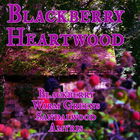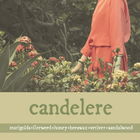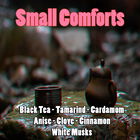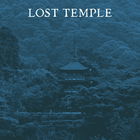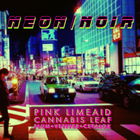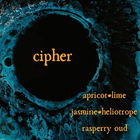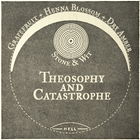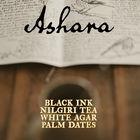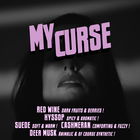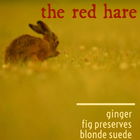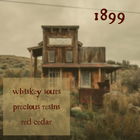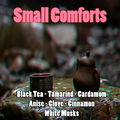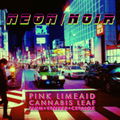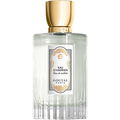
Yatagan
415 Reviews
Translated · Show original

Yatagan
Top Review
47
A Riddle
Unkommentierte Düfte No. 50
For a while, I wondered which fragrance would be suitable for the 50th comment in my little series "Unkommentierte Düfte," until I suddenly became certain some time ago that it would be: Piver's Un Parfum d‘Aventure.
A riddle: the unknown traditional house
The fragrance house L.T. Piver is one of the oldest in the world. Founded in 1774, it quickly became one of the suppliers to the French royal court. Numerous other crowned heads of Europe subsequently became part of this house's clientele. Not much seems to remain of that former glory. The shine has somewhat worn off. Why this is the case is beyond my knowledge.
A riddle: modesty is an adornment...
Today, Piver's products are somewhat overshadowed by other great traditional houses from France and are probably known mainly to connoisseurs. Currently, Piver also has no distribution in Germany, although the fragrances can be ordered through relevant websites or on a site operated by the manufacturer featuring French fragrances. All in all, they are not encountered by fragrance lovers on every corner, making the brand a rather exclusive affair, even though the prices are fortunately often significantly lower than those of other French traditional brands. Modesty is an adornment...
As is fitting for a traditional house, some older compositions have been maintained for many years, although Piver's fragrances have not escaped reformulations, such as the vetiver scent, which has apparently been re-composed several times. Un Parfum d‘Aventure, in its original version, dates back to 1931.
A riddle: a mysterious scent
However, anyone who browses the current homepage of L.T. Piver will notice that the traditional scent "Un Parfum d‘Aventure" no longer appears in the portfolio. Upon closer inspection, it turns out that it has remained in the program - now under the product name "Epices" - (clearly stated on the manufacturer's sales homepage: "Anciennement appelé Parfum d'aventure"). Unfortunately, it has lost the beautiful eloquent name, the attractive, absinthe-like color of the liquid, and the green decor of the bottle and packaging, along with the beautiful sailing ship on the print, which could be understood as a longing symbol of exotic spice cargo and adventures in general (as evoked by the name).
Why this is the case remains a mystery, especially since most observers preferred the venerable presentation, but it may be related to the manufacturer's desire for a uniform design across the entire line. Furthermore, Piver may have realized that the Eau de Toilette originally launched as a women's fragrance is essentially a men's or unisex scent from today's perspective; the categorization seems to have changed several times at the manufacturer over the decades. A discussion about the final classification as a women's, men's, or unisex fragrance, in which I also participated on the research page, has not yet yielded a clear result. Thus, the fragrance remains categorized here on Parfumo for the time being as it apparently was when it first entered the perfume world in 1931: as a mysterious, elusive women's scent (Update: The fragrance has now also been classified here on Parfumo as a unisex scent. I am pleased, as I believe this is correct).
A riddle: the St. Thomas berry
The fragrance contains, as indicated by the ingredients of the identical (classified as a masculine scent) Epices, besides geranium and pepper, also St. Thomas berries. However, research yielded hardly any results on this. Here on Parfumo, there is only this one fragrance (Epices or Un Parfum d‘Aventure) that contains these berries; even relevant internet encyclopedias know almost nothing about this fruit. Does it come from the Caribbean island of St. Thomas, which has a tumultuous, adventurous history?
St. Thomas is an island of the so-called American Virgin Islands; after the indigenous population was murdered by Portuguese explorers, it was initially occupied by Denmark (sic!) in the 17th century, a small part was even sold to Kurbrandenburg (Prussia), which also gained the dubious fame of being a colonial power and slave colony; in 1917, the island was then sold to the USA. Do the mysterious berries that give the fragrance an undeniably original scent, which I have never encountered in other fragrances, grow here?
Anyone who knows more, please add it in the responses. I am curious.
(Updated with help from Franfan 20: it is likely the Bay Rum tree, pimenta racemosa, also known as West Indian bay or bay. Thank you very much!)
A riddle: the scent itself
The scent as a whole is also not easy to categorize. A sharp accent is certainly recognizable, which is likely due to the pepper. Geranium is undoubtedly present and gives the fragrance a clear, bright, although not really fresh, but rather floral lightness, without really appearing feminine. However, there are also notes reminiscent of mint, as well as a scent like that of juniper and clove: perhaps the St. Thomas berries are related to juniper berries and clove and are the source of a very light, subtle gin or alcohol note that I greatly appreciate and have already identified in various fragrances (Comme des Garcons Sugi, L‘Occitanes Eau de Cade, L‘Occitanes Eau des 4 Voleurs...).
Perhaps it is this mysterious St. Thomas berry that gives the fragrance its singular characteristic and makes it somewhat unique. I know of no predecessors or successors to this fragrance from 1931, as I already hinted in a brief comment on Epices.
All in all, a mysterious scent that seems to elude almost all categories: for me, a beautiful, exciting riddle.
For a while, I wondered which fragrance would be suitable for the 50th comment in my little series "Unkommentierte Düfte," until I suddenly became certain some time ago that it would be: Piver's Un Parfum d‘Aventure.
A riddle: the unknown traditional house
The fragrance house L.T. Piver is one of the oldest in the world. Founded in 1774, it quickly became one of the suppliers to the French royal court. Numerous other crowned heads of Europe subsequently became part of this house's clientele. Not much seems to remain of that former glory. The shine has somewhat worn off. Why this is the case is beyond my knowledge.
A riddle: modesty is an adornment...
Today, Piver's products are somewhat overshadowed by other great traditional houses from France and are probably known mainly to connoisseurs. Currently, Piver also has no distribution in Germany, although the fragrances can be ordered through relevant websites or on a site operated by the manufacturer featuring French fragrances. All in all, they are not encountered by fragrance lovers on every corner, making the brand a rather exclusive affair, even though the prices are fortunately often significantly lower than those of other French traditional brands. Modesty is an adornment...
As is fitting for a traditional house, some older compositions have been maintained for many years, although Piver's fragrances have not escaped reformulations, such as the vetiver scent, which has apparently been re-composed several times. Un Parfum d‘Aventure, in its original version, dates back to 1931.
A riddle: a mysterious scent
However, anyone who browses the current homepage of L.T. Piver will notice that the traditional scent "Un Parfum d‘Aventure" no longer appears in the portfolio. Upon closer inspection, it turns out that it has remained in the program - now under the product name "Epices" - (clearly stated on the manufacturer's sales homepage: "Anciennement appelé Parfum d'aventure"). Unfortunately, it has lost the beautiful eloquent name, the attractive, absinthe-like color of the liquid, and the green decor of the bottle and packaging, along with the beautiful sailing ship on the print, which could be understood as a longing symbol of exotic spice cargo and adventures in general (as evoked by the name).
Why this is the case remains a mystery, especially since most observers preferred the venerable presentation, but it may be related to the manufacturer's desire for a uniform design across the entire line. Furthermore, Piver may have realized that the Eau de Toilette originally launched as a women's fragrance is essentially a men's or unisex scent from today's perspective; the categorization seems to have changed several times at the manufacturer over the decades. A discussion about the final classification as a women's, men's, or unisex fragrance, in which I also participated on the research page, has not yet yielded a clear result. Thus, the fragrance remains categorized here on Parfumo for the time being as it apparently was when it first entered the perfume world in 1931: as a mysterious, elusive women's scent (Update: The fragrance has now also been classified here on Parfumo as a unisex scent. I am pleased, as I believe this is correct).
A riddle: the St. Thomas berry
The fragrance contains, as indicated by the ingredients of the identical (classified as a masculine scent) Epices, besides geranium and pepper, also St. Thomas berries. However, research yielded hardly any results on this. Here on Parfumo, there is only this one fragrance (Epices or Un Parfum d‘Aventure) that contains these berries; even relevant internet encyclopedias know almost nothing about this fruit. Does it come from the Caribbean island of St. Thomas, which has a tumultuous, adventurous history?
St. Thomas is an island of the so-called American Virgin Islands; after the indigenous population was murdered by Portuguese explorers, it was initially occupied by Denmark (sic!) in the 17th century, a small part was even sold to Kurbrandenburg (Prussia), which also gained the dubious fame of being a colonial power and slave colony; in 1917, the island was then sold to the USA. Do the mysterious berries that give the fragrance an undeniably original scent, which I have never encountered in other fragrances, grow here?
Anyone who knows more, please add it in the responses. I am curious.
(Updated with help from Franfan 20: it is likely the Bay Rum tree, pimenta racemosa, also known as West Indian bay or bay. Thank you very much!)
A riddle: the scent itself
The scent as a whole is also not easy to categorize. A sharp accent is certainly recognizable, which is likely due to the pepper. Geranium is undoubtedly present and gives the fragrance a clear, bright, although not really fresh, but rather floral lightness, without really appearing feminine. However, there are also notes reminiscent of mint, as well as a scent like that of juniper and clove: perhaps the St. Thomas berries are related to juniper berries and clove and are the source of a very light, subtle gin or alcohol note that I greatly appreciate and have already identified in various fragrances (Comme des Garcons Sugi, L‘Occitanes Eau de Cade, L‘Occitanes Eau des 4 Voleurs...).
Perhaps it is this mysterious St. Thomas berry that gives the fragrance its singular characteristic and makes it somewhat unique. I know of no predecessors or successors to this fragrance from 1931, as I already hinted in a brief comment on Epices.
All in all, a mysterious scent that seems to elude almost all categories: for me, a beautiful, exciting riddle.
29 Comments













 Top Notes
Top Notes  Italian bergamot
Italian bergamot Lavender
Lavender Lemon
Lemon Pink pepper
Pink pepper Heart Notes
Heart Notes  Geranium
Geranium Sri Lankan cardamom
Sri Lankan cardamom Bay rum
Bay rum Cinnamon
Cinnamon Pimento
Pimento Hydraulic Eraser
Hydraulic Eraser Base Notes
Base Notes  Rose
Rose Sandalwood
Sandalwood Haitian vetiver
Haitian vetiver Atlas cedar
Atlas cedar Gandix
Gandix Ergoproxy
Ergoproxy Yatagan
Yatagan DieLora
DieLora Parfusion
Parfusion